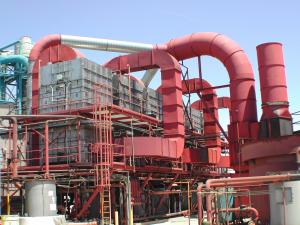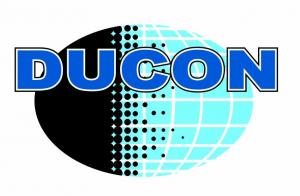
Advanced Technology Features in a Ducon Wet Electrostatic Precipitator
Ducon Wet Electrostatic Precipitators are highly effective in controlling particulate emissions, achieving particulate control efficiencies of 99% to 99.99%.
Ducon Technologies Inc. (NSE:DUCON)
FARMINGDALE, NY, USA, July 29, 2024 /EINPresswire.com/ -- Wet Electrostatic Precipitators (WESPs) are critical components in modern air pollution control strategies, particularly in industries where fine particulate matter and mist need to be effectively captured.
WESPs are highly versatile and effective for controlling a wide range of pollutants and particle sizes. They are particularly well-suited for:
Types of Pollutants:
1. WESPs excel at capturing fine particulate matter, including PM2.5 (particles with a diameter of 2.5 micrometers or smaller) and PM10 (particles with a diameter of 10 micrometers or smaller). These fine particles are often difficult to capture using other methods.
2. WESPs are especially effective at removing submicron particles (particles smaller than one micrometer) due to their high charging efficiency and wet collection mechanisms.
3. WESPs are highly efficient at capturing mist and aerosols, including sulfuric acid mist, oil mist, and other liquid aerosols that can be present in industrial exhaust gases.
4. Particles containing heavy metals such as lead, mercury, arsenic, and cadmium can be effectively captured by WESPs, reducing the emission of toxic substances.
5. WESPs can be effective in capturing acid gases and vapors when combined with scrubbing liquids. This capability enhances their performance in reducing sulfur dioxide (SO2) and other acid gases.
6. Volatile organic compounds (VOCs) and semi-volatile organic compounds (SVOCs) can be captured by WESPs, particularly when they condense into particulate form or are absorbed into the scrubbing liquid.
WESPs are well suited for pollutants with following particle sizes:
1. Ultrafine Particles: WESPs are particularly adept at capturing ultrafine particles (less than 0.1 micrometers) due to their high surface charge-to-mass ratio, which enhances their collection efficiency.
2. Nanoparticles: Nanoparticles (particles less than 100 nanometers) can also be effectively removed by WESPs. These extremely small particles are efficiently charged and collected due to the strong electric fields and the scrubbing action of the liquid.
3. Coarse Particles: While WESPs are highly effective for fine and ultrafine particles, they can also capture larger particles. However, coarse particles are typically easier to capture and may be handled by other particulate control devices upstream of the WESP.
Ducon WESPs are used in a variety of industrial applications where these pollutants and particle sizes are prevalent, including:
• Power Plants: For capturing fly ash, sulfuric acid mist, and fine particulates from flue gas.
• Metallurgical Plants: For controlling emissions of metal fumes, dust, and acid mist.
• Chemical and Petrochemical Industries: For removing fine particles, mists, and organic compounds from process gases.
• Pulp and Paper Mills: For capturing mists and fine particulates from recovery boilers and lime kilns.
• Waste-to-Energy Plants: For controlling emissions of fine particulates and acid gases.
Ducon Wet Electrostatic Precipitators are highly effective in controlling particulate emissions, achieving exceptionally high particulate control efficiencies. Typically, a well-designed and properly maintained WESP can achieve particulate control efficiencies of 99% to 99.99%.
Several design factors influence the collection efficiency of a Ducon WESP, including:
1. Particle Size Distribution: WESPs are particularly effective at capturing fine particles, including submicron particles, which are challenging to control with other technologies.
2. Operating Voltage: Higher operating voltages improve the ionization of particles, enhancing their capture efficiency.
3. Gas Flow Rate: Optimal gas flow rates ensure sufficient residence time for particles to be charged and collected on the electrodes.
4. Liquid Flow Rate: Proper liquid distribution over the collection surfaces helps in washing away collected particles, preventing re-entrainment and maintaining high efficiency.
5. Electrode Design: Advanced electrode designs, including high-frequency power supplies and optimized geometries, contribute to better particle capture.
The evolution of Ducon’s WESP technology has seen significant advancements, incorporating features that enhance their efficiency, reliability, and versatility. Following are some of the cutting-edge technological advancements in Ducon’s WESPs that are setting new benchmarks in air pollution control applications.
High-Frequency Power Supplies
One of the key advancements in WESP technology is the adoption of high-frequency power supplies. Traditional WESPs used 50/60 Hz power supplies, which limited their performance and efficiency. High-frequency power supplies, operating in the range of 20-80 kHz, provide a more stable and continuous power output. This enhancement allows for a more uniform electric field, improving particle charging efficiency and collection. Moreover, high-frequency power supplies are more energy-efficient, reducing operational costs and enhancing the overall sustainability of the system.
Advanced Materials and Coatings
The use of advanced materials and coatings has significantly improved the durability and performance of WESPs. Corrosion-resistant materials like stainless steel and specialized coatings enhance the lifespan of the precipitator components, especially in harsh industrial environments. These materials also contribute to better performance by maintaining the integrity of the collecting electrodes and reducing maintenance needs. Innovations in hydrophobic and hydrophilic coatings have also been instrumental in optimizing water distribution and particulate removal, ensuring that the system remains efficient even under varying operating conditions.
Modular Design and Scalability
Modern WESPs are designed with modularity and scalability in mind. This allows for easier customization and adaptation to specific industrial requirements. Modular designs enable industries to scale up or down based on their emission control needs without significant overhauls. This flexibility not only reduces initial capital investment but also allows for incremental upgrades as regulatory requirements become more stringent or as production processes change.
Real-Time Monitoring and Control Systems
The integration of real-time monitoring and control systems has revolutionized the operation of WESPs. Advanced sensors and control software allow for continuous monitoring of critical parameters such as voltage, current, temperature, and particulate concentration. These systems enable operators to make real-time adjustments to optimize performance and ensure compliance with emission standards. Additionally, predictive maintenance algorithms can foresee potential issues before they lead to system failures, thereby minimizing downtime and maintenance costs.
Enhanced Droplet and Mist Collection
One of the unique advantages of WESPs over dry electrostatic precipitators is their ability to handle wet pollutants, including droplets and mists. Recent advancements have focused on enhancing this capability through improved liquid distribution systems
Ron Kumar
Ducon Group
rkumar@ducon.com
Distribution channels: Building & Construction Industry, Energy Industry, Environment, Manufacturing, Science
Legal Disclaimer:
EIN Presswire provides this news content "as is" without warranty of any kind. We do not accept any responsibility or liability for the accuracy, content, images, videos, licenses, completeness, legality, or reliability of the information contained in this article. If you have any complaints or copyright issues related to this article, kindly contact the author above.
Submit your press release

